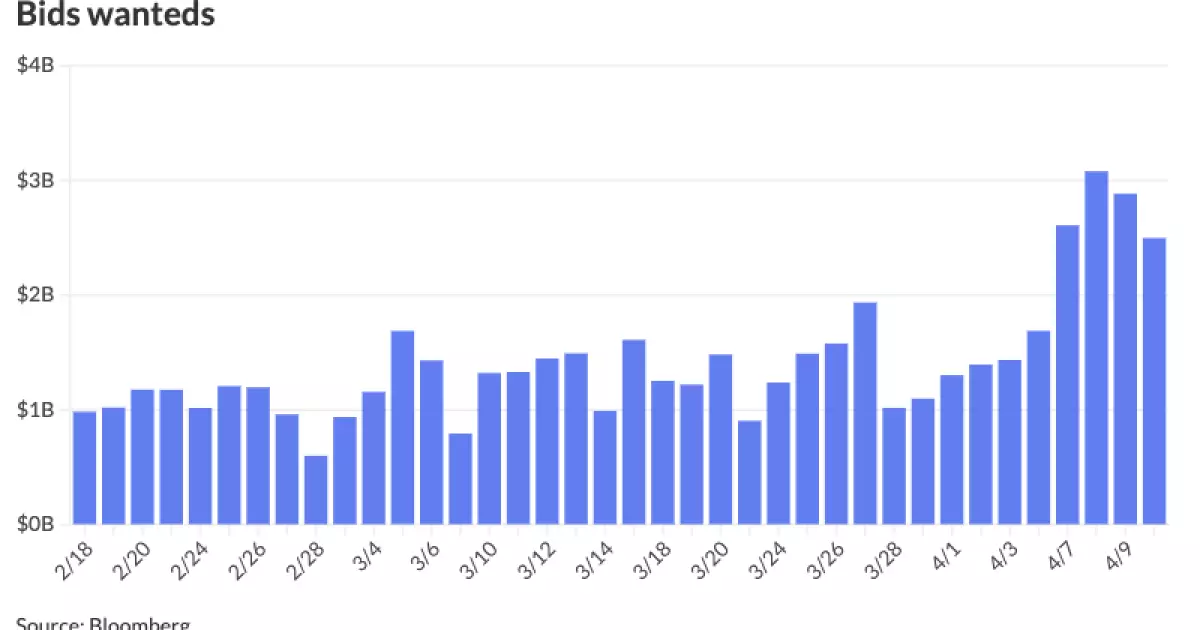The 7 Alarming Signs of a Municipal Bond Market in Turmoil

The current landscape of the municipal bond market is unsettling, as evidenced by the alarming trends and rapid changes in yields. Recent reports outline a significant sell-off that has occurred multiple times this week alone, heavily influenced by tariffs and political uncertainty. This situation is not just a blip on the radar; it hints at deeper systemic issues that warrant closer examination. If you’re a bond investor or even an economic enthusiast, it’s crucial to be aware of the signs indicating a market in distress.
The Tariff Tidal Wave
President Donald Trump’s tariffs have unleashed a wave of anxiety across financial markets. While policymakers intend for tariffs to protect domestic industries, the reality has often backfired. The soaring yields in the bond market signify a direct reaction to the uncertainty stemming from these trade policies. Investors are increasingly nervous, leading to forced selling and abrupt volatility. It’s a classic example of creating more problems than solutions—one of the telltale signs of political mismanagement.
The Shadows of Record ETF Outflows
It’s alarming to note the record outflows from Exchange-Traded Funds (ETFs). Such a massive shift in capital indicates a lack of confidence among investors in municipal bonds, which should traditionally be seen as a safe haven. The recent sell-offs have highlighted a troubling pattern: the fear of instability looms so large that even high-grade munis are experiencing severe pushback. The pressures of uncertainty are forcing investors to cash out, reflecting a dramatic change in sentiment.
Yield Curves: A Disturbing Inversion
Recent days have seen a notable shift in the dynamics of the yield curve—a key indicator of economic health. Yields jumped around 45 basis points for the 10-year U.S. Treasury bonds, an unnerving sign for investors who are usually accustomed to a more benign environment. The yield curve’s inversion, in a broader context, often signals a recessionary phase ahead, raising alarms about the durability of the current economic recovery.
The Landscape of Legislative Uncertainty
Political decisions drive financial markets, and right now, legislative uncertainty is King. With key policy decisions hanging in limbo, both policymakers and investors are left in a state of anxious anticipation. The inability to forecast governmental actions creates an environment rife with potential pitfalls. When decisions linger without resolution, it causes uncertainty to seep into the market, something that financial strategists like those at J.P. Morgan and Barclays have raised concerns over.
The Shadows of Supply and Demand
A troubling aspect of this week’s market activity is tied to elevated tax-exempt supply and insufficient reinvestment capital. As municipalities continue to issue debt, the influx exceeds demand, creating pressure on prices and subsequently eroding yields even further. Increased sales lead to a vicious cycle; investors fear missing out on better opportunities elsewhere and start pulling their money out, leading to an ever-growing backlog. The basic economic principle of supply and demand is spiraling out of control, with dire implications for investors.
Risk Aversion: The Return of Flight to Quality
As the market turmoil intensifies, we see a classic flight to quality happening once again. Investors are opting for higher-rated bonds, often shunning lower-rated options. This behavior is indicative of a collective risk-averse mindset. Historical instances remind us how in previous downturns, lower portfolio ratings were often shielded against sell-offs, while high-quality bonds bore the brunt of panic-driven trades. This underscores a market tendency that can produce further instability if not managed carefully.
Stability: An Elusive Pursuit
Insightful observers note that this week has experienced some of the worst daily sell-offs in recent history, with deep repercussions anticipated over the longer term. The turbulence in the marketplace makes it exceedingly challenging for issuers and underwriters alike. The notion of stability appears to be nothing more than a ghostly wish—one that investors chase but often fail to grasp, as outlined by various strategists. True market equilibrium feels miles away as companies grapple with how to properly structure their investments amid current conditions.
Looking Ahead: Opportunities and Risks
While the situation seems bleak, history often reminds us that moments of crisis can be ripe for opportunities. The last major crisis saw a plethora of buying opportunities once conditions began stabilizing. However, predicting when markets will right themselves remains as complicated as untangling a web of political maneuvers and economic shifts. Whether this serves as a watershed moment or a momentary setback is up for debate, but one thing is clear: the landscape is changing, and only the astute investor will navigate it successfully.





